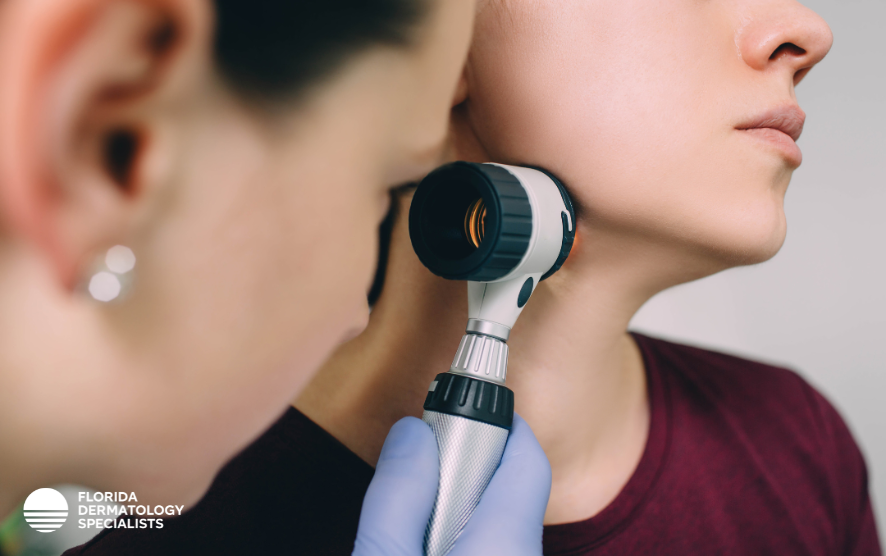Melanoma is a type of skin cancer that arises from the uncontrolled growth of melanocytes, the pigment-producing cells in the skin. It is often associated with prolonged exposure to ultraviolet (UV) radiation from the sun or tanning beds. Melanoma can vary in appearance, from unusual moles to dark spots on the skin.
Identification and prevention are paramount in the fight against melanoma, as the saying goes, ‘early detection saves lives.' This rings particularly true for melanoma, where catching it in its early stages dramatically enhances treatment success rates and positively impacts patient outcomes. That being said, implementing preventive measures, such as sun protection practices and regular skin examinations, can reduce the risk of developing melanoma altogether.
Understanding Melanoma
Melanoma can encompass various types, including superficial spreading melanoma, nodular melanoma, lentigo maligna melanoma, and acral lentiginous melanoma, each with distinct characteristics and behaviors influencing treatment strategies. Read more about the types of Melanoma from the National Cancer Institute Here.
Melanoma risk factors range from genetic, environmental, and lifestyle influences. Genetic predisposition plays a role in certain individuals, with specific gene mutations increasing susceptibility. Additionally, prolonged exposure to ultraviolet (UV) radiation from sunlight or artificial sources, such as tanning beds, significantly heightens the risk of melanoma. Other factors such as fair skin, history of sunburns, compromised immune function, and previous skin cancers also contribute to susceptibility.
Despite its prevalence and potential severity, melanoma is often surrounded by misconceptions. These misconceptions may include beliefs about who is at risk, the effectiveness of sunscreen, or the misconception that melanoma only affects older individuals.
The ABCDE Rule for Recognizing Melanoma
An acronym developed in 1985 by Alfred Kopf, along with fellows Robert Friedman, and Darrell Rigel, the ABCDE rule continues to be pivotal in identifying potential signs of melanoma, serving as a valuable tool to this day.
A: Asymmetry
B: Border Irregularity
C: Color Variation
D: Diameter
E: Evolution or Change in Appearance
Asymmetry refers to one half of the mole or lesion not matching the other half. Border irregularity, the second criterion, entails edges that are notched, irregular, or blurred. Color variation, the third aspect, involves uneven coloring with shades of brown, black, or other colors present. Diameter, the fourth factor, signifies a size larger than the eraser of a pencil (about 6 millimeters or more). Lastly, any evolution or change in appearance, such as alterations in size, shape, color, or elevation over time, should be closely monitored for potential indications of melanoma.
In addition to the ABCDE rule, other signs and symptoms may suggest the presence of melanoma. Itching or tenderness of the mole or lesion, as well as bleeding, oozing, or crusting, should be promptly evaluated. Furthermore, changes in sensation, such as pain, tingling, or numbness, may also warrant further investigation to rule out melanoma or other skin abnormalities.
What to Do If You Suspect Melanoma
If you suspect melanoma, prompt medical attention is crucial. Consulting a dermatologist for examination is essential, as they can accurately diagnose and conduct necessary biopsies for confirmation. Treatment options vary depending on the stage of the disease, with surgical excision being common for early-stage cases. Advanced melanoma may require additional treatments like chemotherapy, immunotherapy, or targeted therapy to combat the disease.
A Proactive Approach to Skin Health
By understanding the risk factors and implementing proactive strategies, individuals can significantly reduce their likelihood of developing melanoma. By limiting exposure to UV radiation you can lower the risk of melanoma, this includes avoiding peak sun hours and using sunscreen with a high SPF. Wearing protective clothing like hats and long sleeves, along with accessories such as sunglasses, further shields the skin.
Scheduling regular skin examinations is essential for early detection, and conducting self-examinations allows individuals to monitor their skin at home. Professional skin checks by dermatologists provide thorough assessments and prompt intervention if any suspicious lesions are found. Lastly, education and awareness efforts are vital in spreading knowledge about melanoma risks and prevention methods, encouraging communities to prioritize skin health and adopt preventive measures.
Schedule your Skin Check Today!
At Florida Dermatology Specialists, we advocate for regular skin checks to address any concerns and detect potential issues early on. Our comprehensive skin check examinations are designed to target specific concerns and provide thorough assessments, ensuring that individuals receive the personalized care they deserve. By staying informed, practicing sun safety, and seeking professional dermatological care, we can work together to reduce the incidence of melanoma and promote healthier skin for all. Schedule your skin check today and embark on a journey towards lasting skin wellness.

